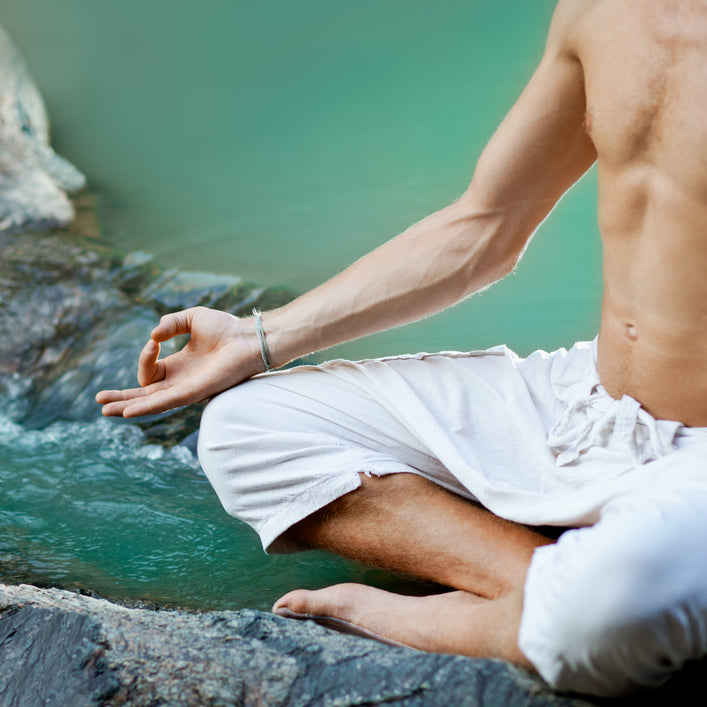Last week I wrote about the balance between movement and stillness as a core element of health, and I explained how modern humans have trended toward imbalance in two ways. On a physical level, it is common to have too much stillness and not enough movement; and on a mental level, it’s common to have too much movement and not enough stillness. That is, many, many people are physically inactive with minds that never stop. The solution to physical inactivity is to move more, and the solution to mental overactivity is meditation.

For all the resistance I’ve encountered when asking patients to exercise more, I’ve gotten double the pushback when I ask them to meditate. The mind thrives on being the center of our attention. It doesn’t want to be ignored, and it always wants something to chew on. If we try to stop or circumvent it, it gets desperate. This accounts for all the times I’ve heard, “I tried it, but I just couldn’t sit still for more than three minutes.” Couldn’t sit still for more than three minutes? What do you do at your desk and on your couch for hours every day?
I get it. If it would at least provide some sort of instant gratification, like a brain massage or a mini-orgasm, we’d make ourselves do it. Alas, it may take a little time before we perceive its benefits. But, that’s the way it is with exercise, and we get ourselves to do it, don’t we? Perhaps the difference is that the benefits of exercise are so well established and – maybe more importantly – it has the objective result of making our bodies look nicer.
Research suggests that a meditation practice can:
- Reduce psychological stress
- Improve immune function
- Improve quality of sleep
- Alleviate depression and anxiety
- Improve blood sugar control in diabetes
- Reduce pain of all kinds
- Support healthier emotional development in children
- Promote lengthening of telomeres (DNA repair associated with resilience to aging and longer life)
- Improve cardiovascular health and lower blood pressure
- Reduce inflammation (in inflammatory bowel disease, cardiovascular disease, and other conditions)
- Enhance the ability to focus one’s attention
- Reduce cravings
- Promote an overall feeling of wellbeing
Can you find something in this list that appeals to you?
There are all sorts of ways to meditate, so I suggest you try a few and choose the form that is most appealing and easiest to stick with. Most meditation research in recent years has been done on practices that fall under the broad heading of “mindfulness,” which means holding our attention on whatever we’re experiencing in this moment, without trying to avoid anything, hold onto anything, or change anything. Just being in and with the present.
Much of the popularity of mindfulness practices in the West is due to the work of Dr. John Kabat-Zinn, a student of Buddhism who established a meditation center at the University of Massachusetts Medical School in 1979. His process, called Mindfulness-Based Stress Reduction, is taught to patients with a wide range of medical issues, including severe pain and terminal illness, and has been successful at improving objective measures of health, and more importantly, improving patients’ subjective evaluation of their quality of life.
This week, I invite you to try meditating. Spend a few minutes a day simply noticing the whole of your experience – what you’re doing, what you’re feeling, what you’re thinking – as an unattached observer. Can you refrain from resisting or attempting to change the thoughts and feelings you dislike? Can you refrain from clinging to the thoughts and feelings you enjoy? See if you can approach your meditation practice without any intention of making something happen.
Be well,
Dr. Peter Borten



4 comments
Andy, I’m glad your patients get on board with that so readily!
Hi Cynthia, check out the next article on what to do when meditation is too hard. In that article is also a link to articles I wrote on the use of mantras and a single breath meditation. These might be a good way for you to start.
These days I have a very active mind. You might call it an over loaded brain. It is difficult to think that the brain can absorb everything it comes in contact with. My way of trying to relax my brain is focusing on nature. The trees shedding thier leaves and beautiful colors of leaves covering the grass. The sound of the birds calling one another. I find this sense of calmness in my back yard. I find it difficult to meditate on my own. I’m having a problem focusing with many thoughts of what happened during the day. It is interfering with my sleep and I am awake in the early am hours. What should I do.with my overactive brain?
Thanks Peter.
I love to meditate. I tell all my clients, if we’re going to work together you must start meditating. It works!